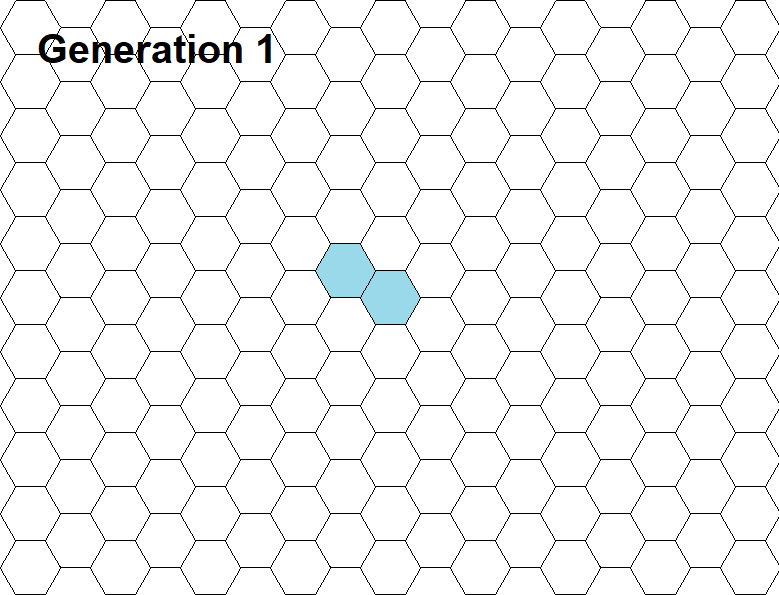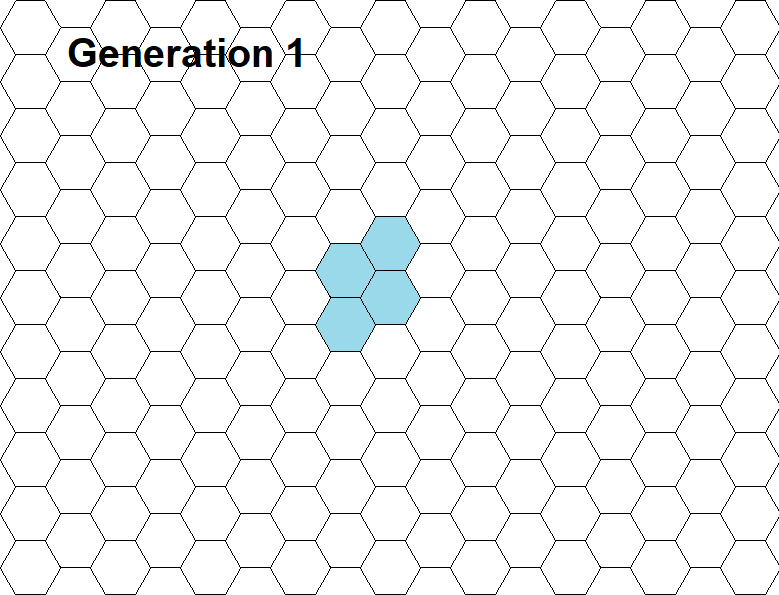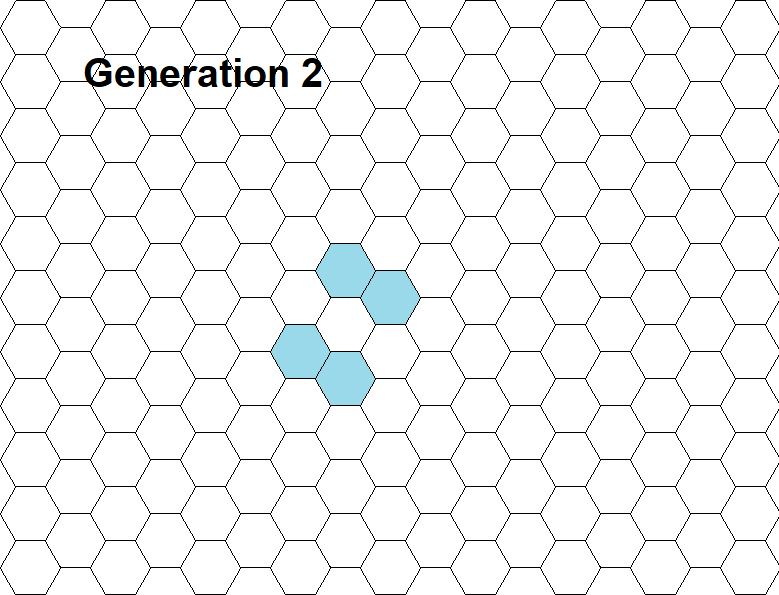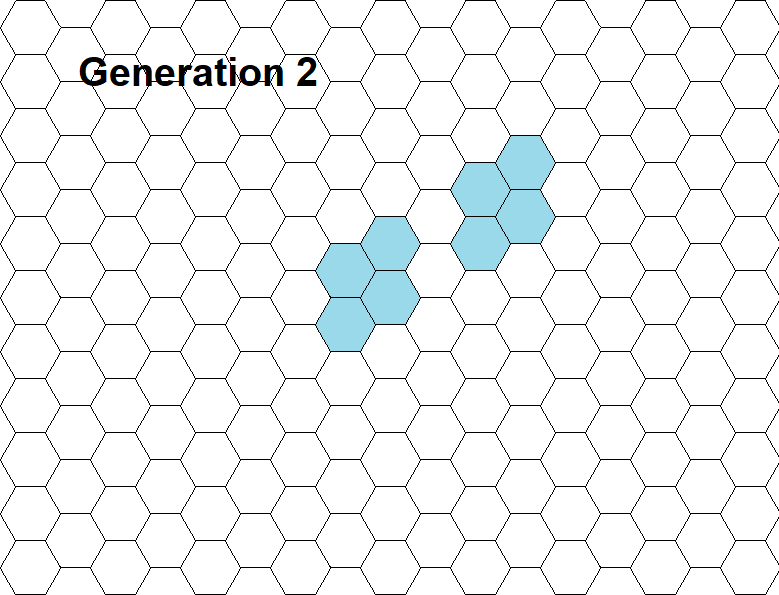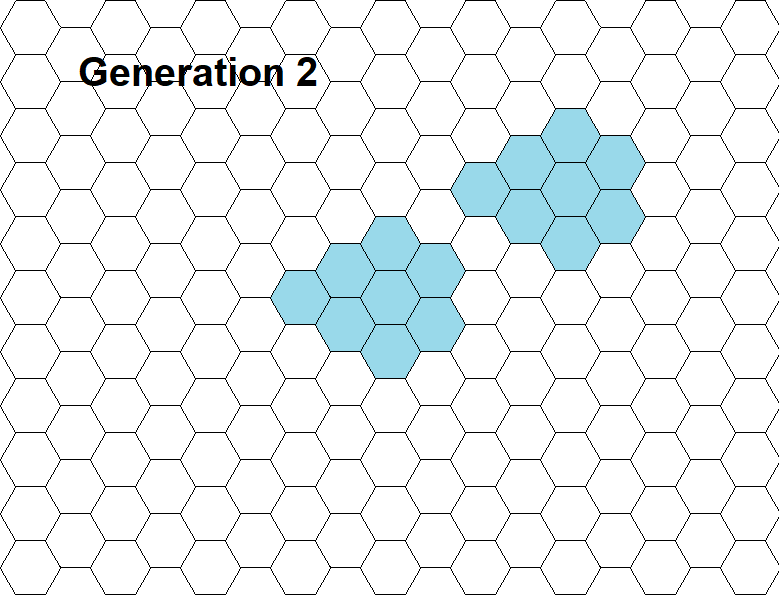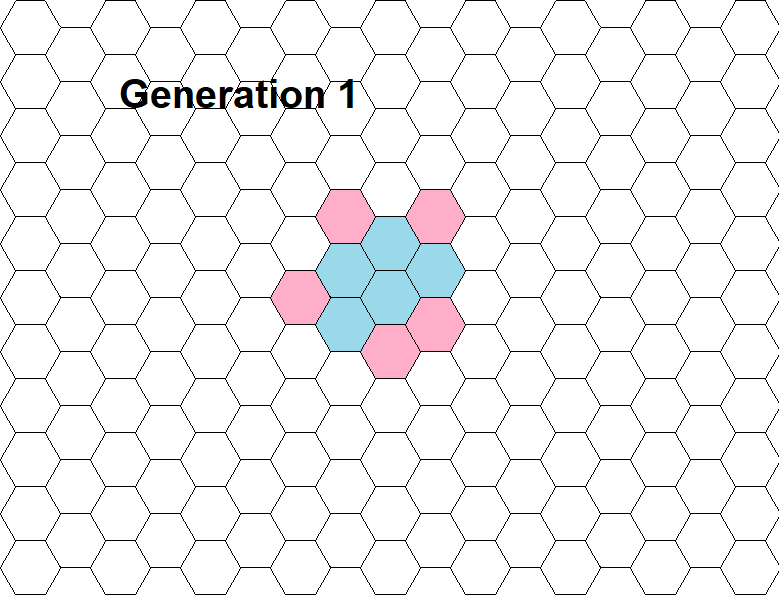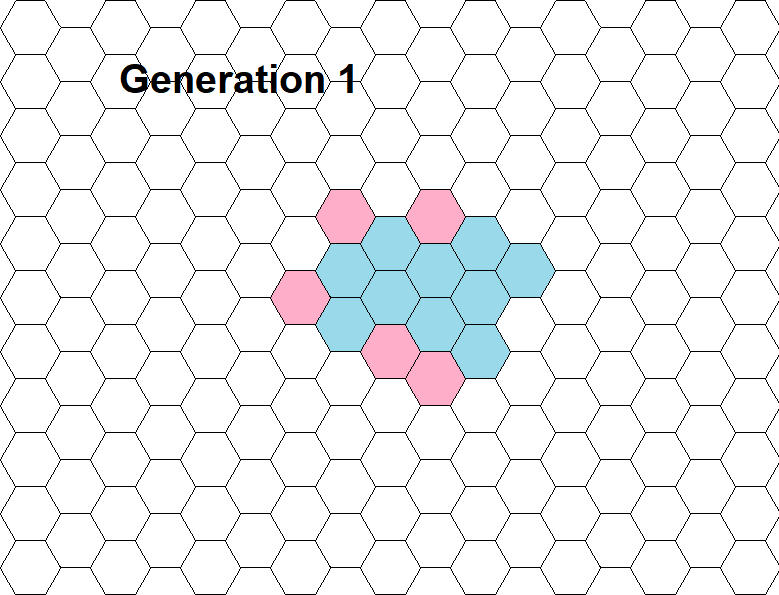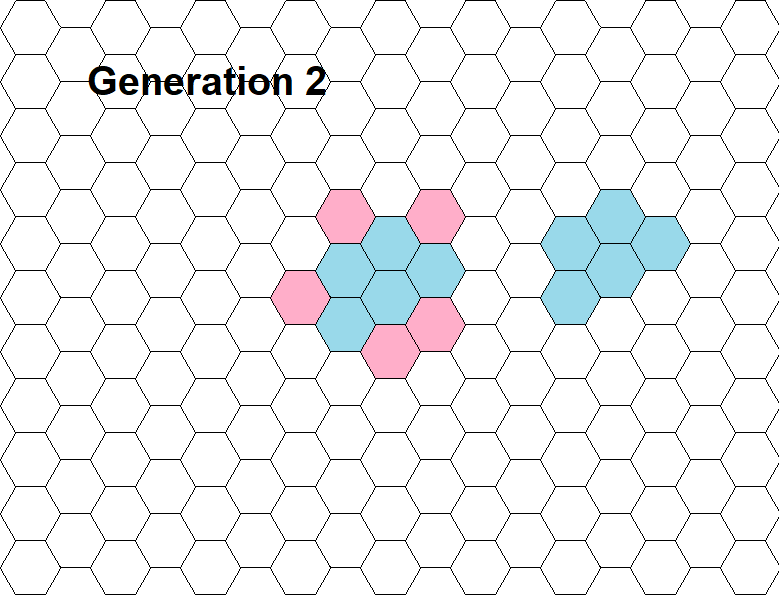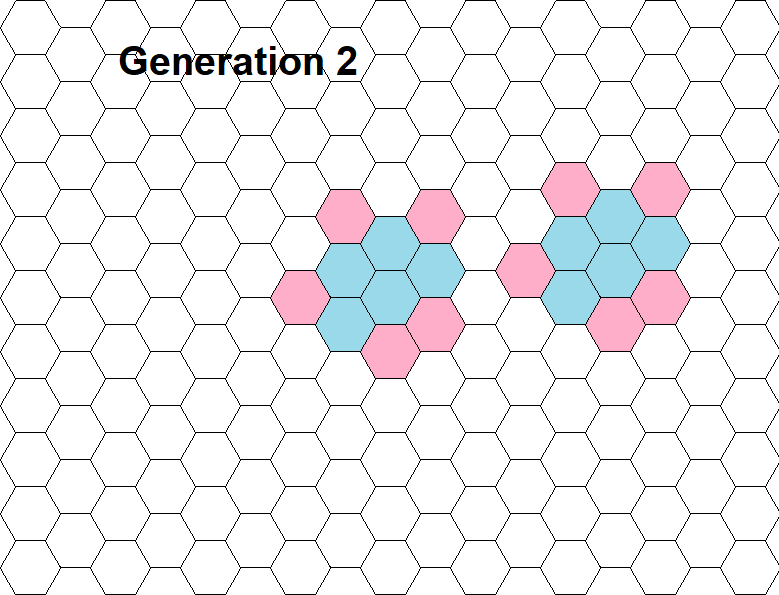It’s not optimal to create the layout before entering the stage, but it will be much harder to make new editing controls that work inside the cell stage and allow you to edit the position of your cells (in realtime?).
i meant in inside the stage but paused (like the city and tribal editors in spore), it could be in another editor like the cell type editor but i just thougth that would be kind of annoying to do every couple of minutes.
and setting the priorities in the layout (which cell to make first) could potentially be even harder, with the complexity being analog to the process system (for example, if a colony has a chemosynthetizer cell and a photosynthetizer cell in the layout, which one to make first?)
Hm, maybe we could have a priority list in the editor. You can then categorize the different cell types of your colony into a list, so that when you are multiplying in the environment, the game knows which cells to make first.
Speaking of which, I realized we need some new terminology for these concepts. I would suggest “Proliferation” as the process of having your cell split to form new cells to form/fill-up the colony. “Reproduction”, on the other hand, is when a cell splits to form a spore, which doesn’t attach to the colony and instead swims out to start a new colony (but first initiates the Editor).
Also, crodnu raises a good point. What if the original cell of your colony dies? Should proliferation and reproduction be tied to the original cell? Or should any cell be able to profilerate/reproduce?
My idea (as i pointed out in my original post) was to make the original cell type the one able to proliferate into other cell types (with other cell types being only able to form cells of the same type), and of course being needed in the spore (which could maybe have more than 1 cell?). The original cell type would then by some sort of embryonic tissue, like the meristems in the plants or the stem cells in the animals.
Ah fantastic idea! That actually got me thinking, what if when the player creates new cell types in the multicellular editor, they form a tree? The player starts with the original cell type at the top of the tree. The first new cell types have to branch off from that original node. However, the next time you come to make cell types, you can branch them off from any of the secondary nodes or the original node. When proliferating in the environment, cells can only proliferate into cells of their node or lower.
EDIT: Something like this:
https://www.researchgate.net/profile/Katherine_King3/publication/51635992/figure/fig3/AS:279058823827473@1443544216249/Figure-1-The-haematopoietic-treeLong-term-haematopoietic-stem-cells-HSCs-have-the.png
Or would that be too much added complexity for not enough gain?
I’ve done some more reading and thinking on the subject and I think I have come up with a concept for reproduction that fits in the evolution of sexual reproduction and is continuous with reproduction in the Microbe Stage.This concept is a fusion of spores and budding. It helps fill in the gaps of what earlier concept was missing.
So, time for some new terminology:
A cell can either be a germ cell or a somatic cell.
- Germ Cell - Any cell that can split itself to produce “sex cells” (called gametes), such as an egg or sperm cell. One of each type of sex cell must come together to form a new colony.
- Somatic Cell - Any cell that is not a germ cell. They cannot split to form “sex cells” (gametes).
A cell can also either be a stem cell or non-stem cell.:
- Stem Cell - Any cell that can split to form different cell types.
- Non-Stem Cell - Any cell that can only split to form more of itself.
Germ vs Somatic Cells
So a cell can be either a germ cell, where they can form sex cells to form new colonies, or they can be somatic cells where they are just standard.
By default, all colonies will reproduce asexually, so no cells will be germ cells. A colony can evolve its original cell type to become germ cells. Question for discussion: Should we allow any cell type to be able to be evolved into a germ cell type, or only the original cell type? I think that for the sake of simplicity we should only allow the original type to be evolved into germ cells.
Stem vs Non-Stem Cells
A cell can either be a stem cell, where they can split to form other cell types as well, or they can be non-stem (I remember there being a word for this) where they can only split to form more of their own type.
Based off of our discussions so far, it seems like the original cell type should be stem cells and all newly created cell types will be non-stem. In other words, cells of the original type can split to form any other type, but cells of the other types can only form more of themselves.
With these definitions in mind, let’s now look at reproduction.
The original cell type is somatic and stem (can’t make gametes, can form any cell type). When the player creates new cell types, they will always be non-stem. They will also be somatic.
The player can evolve their original cell type to become germ, but not the other cell types (unless we decide otherwise in the question posed above).
Sample Gameplay
When the player first exits the microbe editor with signal agents AND binding agents, they will see their cell split. However, for the first time, the two cells will stay stuck together and will be simultaneously controlled by the player. This marks the entry to the multicellular stage. These two cells together are the original colony (each hex represents a cell).
These two cells will continue to grow and replicate their organelles and progress towards reproduction just as in the microbe stage. The only difference is, now when the cells complete a cycle of reproduction and make a new copy of themselves, the player doesn’t enter the editor. Instead, they will need ALL of the cells of their colony to duplicate themselves before they can split the colony and enter the editor. For the original colony, this means growing until it goes from 2 to 4 cells.
Once the entire colony has doubled, the colony stops growing and cannot continue to grow (Or, new cells will continue to be produced but they will break off immediately after forming). The reproduce button becomes available for the player and pressing it will take them to the Multicellular Editor (as detailed above). Let’s say that in the editor the player adds two more cells of the original type to the colony.
After exiting the editor, the player watches their colony split. In this example the four cells split into two colonies of two cells. They take over one of these new colonies. The player then grows their colony of 2 cells until it reaches 4 cells, which is the new standard size that was designed in the editor. Then it continues to grow and replicate until it has 8 cells, which is double its normal size and is the first step of reproducing.
So far, this is all based off of the budding approach and not what @hhyyrylainen suggested. The reason I think that budding is better in this part is because it is very similar to the form of reproduction before (grow bigger, then split) and is very simple. However keep reading.
Eventually, the player will develop specialized cells. When a colony starts to grow a bud for a new colony, it only grows the stem cells of that colony. Then the bud will break off and the stem cells will keep reproducing to fill in the rest of that colony. For example, say I have a colony of 5 stem cells (the original cell type) and 5 protective cells (a specialized cell type). When I start forming a bud, the bud grows 5 stem cells, then it breaks off. I take over those 5 stem cells, and they continue to grow and split to produce the remaining 5 protective cells. Now I have a full new colony of 10 cells.
So in this way the cell doesn’t bud off an entire new colony, but also doesn’t just send out an individual cell as a spore. I feel like the problem of unicellular spores, as @hhyyrylainen suggested, is that it means your stem cells have to be very well designed for surviving on their own. It also means quite slow gameplay when you first break off as a spore and have to grow an entire colony on your own.
I would call this form of reproduction partial budding, and it would be the default form of reproduction for every colony. Spores and Full Budding would be possible alternatives a colony could evolve. Spores would be @hhyyrylainen’s idea, and Full Budding would mean growing the entire new colony as a bud before it breaking off (instead of just the stem cells).
Sexual Reproduction
Eventually the player can evolve sexual reproduction. In the editor, they would edit their original cell type and make it into a germ cell. During gameplay it would look like this: The colony is swimming around. When it is ready to reproduce, the stem cells produce a gamete and release it into the environment. If it interacts with a gamete of the other type (male with female or vice versa), then they fertilize and fuse and form the first stem cell of a new colony, which the player now takes over. This stem cell grows until it has become a whole new colony.
What do you guys think of this concept?
I think partial budding has some issues:
-
How would the stem cells grow? If it’s not done carefully the player could end up growing a crippling tumor of stem cells.
-
Having just one stem cell is the optimum, since you only require to split it once, which reduces the amount of most likely unwanted stem cells both in your old organism and your new one.
-
How do you handle the stem cell being in the middle of a colony? (a likely scenario because of 1).
-
Sexual reproduction would still turn into something similar to our original concept of spore mechanics (which, btw, i mentioned first
 )
)
Very good questions.
- The stem cells grow only until they reach the number designated by the player in the Multicellular Editor. If growing the stem cells of a bud, the bud will grow on the exterior of the colony. The bud will force the colony to survive with more cells than usual but that would be the tradeoff of reproducing. Also I’m not too familiar with how easy/hard it’d be to code and animate this. I’m just imagine that if an interior cell would split they would push out the surrounding cells. Something like shown in this video (the cells reproducing on the inside):
-
I’m a little confused, what do you mean by unwanted stem cells? Theoretically your colony will never produce excess cells, only the ones designed for your colony in the editor.
-
Stem cells growing on the inside would have to migrate to the edge and then break off. Also now I see what you mean by talking about a crippling tumour, because maybe you have a surrounding layer of protective cells and what if the bud’s growth breaks that barrier. I would say either buds can grow inside as well, or that is the tradeoff of budding and the player would thus have incentive to evolve spores or sexual reproduction. It would give a neat trick to keep budding for smaller organisms (like in LAWK).
-
Ah my bad, credits to you for that then
 . That’s a good point that spores and sexual reproduction are pretty similar in our current concept, so I think we should make it so that colonies that reproduce sexually receive a 25% discount to all MP costs in the editor. This is to simulate the fact that sexual reproduction offers a species the possibility to have a lot more genetic diversity and each member can have a different phenotype, as well as each sex. In game spores and sexual repro should be distinguished by spores being relatively easy to grow and send out, which can then start growing its own colony immediately, whereas gametes take a while longer to grow and send out, and also need to find and match with another gamete before they can fertilize and start growing. Sexual repro’s tradeoff would be quicker evolution for slower reproduction.
. That’s a good point that spores and sexual reproduction are pretty similar in our current concept, so I think we should make it so that colonies that reproduce sexually receive a 25% discount to all MP costs in the editor. This is to simulate the fact that sexual reproduction offers a species the possibility to have a lot more genetic diversity and each member can have a different phenotype, as well as each sex. In game spores and sexual repro should be distinguished by spores being relatively easy to grow and send out, which can then start growing its own colony immediately, whereas gametes take a while longer to grow and send out, and also need to find and match with another gamete before they can fertilize and start growing. Sexual repro’s tradeoff would be quicker evolution for slower reproduction.
What do you guys think of partial budding? Does it make sense/work as a default mode of reproduction before spores or another system is evolved, or is it better that we stick with Spores as the default mode.
I just thougth about 2 questions:
A) If your multicellular species gets split in half by an angry predator killing the cells in the middle what should happen?
B) How should agents work? should they be shot from all external cells or just from the front of the creature?

So since we have been aiming to implement binding agents lately, I have decided to go ahead and put our general ideas into writing for future reference.
To begin, binding agents will be represented by a placable part as a placeholder as we currently do not have a different system for it to call home. This part will only be placeable as a eukaryote, and once placed will allow the player to bind with other individuals of their species to form a colony. Aside from unlocking the binding functionality, the placable part will simply be capable of performing basic glycolysis much like prokaryotic parts. This is to reflect the fact that the binding agents are infact a protein and not an actual organelle. Finally, the part will cost 100 MP, again this is temporary, and will likely change once we have a more defined concept of unlocking parts.
With that said and done, let us move on to how the act of binding shall work. First we need to discuss how to initiate bonding. I’m not entirely sure what the best way to do so might be, so I am going to go ahead and display the following options I have devised.
Option A: I suppose the easiest method of doing so would be to add a new toggled mode (Probably toggled by the B key) similar to engulfment mode that allows you to bond with cells you collide with. However, I am not fond of the idea of having separate toggled modes for each feature we add.
Option B: Alternatively binding could be an automatic action that is performed by pushing against an allied cell for a certain time. You could then break away from the cell by swimming away from them for a time. The problem with this however, is that it would mean colonies would be rather immobile, and potentially temporary.
Option C: A bit similar to Option B, but instead of being an automatic function, you would instead initiate bonding by clicking on cells you are touching. I personally feel this might be my favorite choice.
Finally, we need to think about the benefits of colonial bonding. I personally believe that cells bound together should share resources, that way if one cell ends up collecting glucose, it transfuses excess to
adjacent connected cells equally. Additionally, cells should have reduced osmoregulation cost for each cell bound to them. I would say a flat bonus of -0.2 (Not a percentage) osmoregulation cost per adjacent cell would be good to start with.
This should make forming colonies a viable option to help a species grow larger, and eventually bridge into multicelluarity.
(Was this the right place to post this?)
I don’t like this idea because it’s different from the toxin vacuole. I just checked and it only does oxytoxy synthesis. So I think for consistency the binding agents organelle should do no processes.
I like option A. It’s a major part of the game and deserves it’s own button. This also makes it easier to add controller support to the game. I just think it’s simple, similar to engulfing, and firing toxins also has its own button.
Prokaryotic civilisations doesn’t sound like the right place.
Nice ideas
Can I ask about how you are imagining this? For example for early multicellular is it that there’s a new editor screen where each hex is a cell rather than being an organelle or something?
If so what are the criteria for unlocking that new editor? Is it about binding to a certain number of cells while swimming or something? If so what if you can’t find them? Or is it that you need another protein or organelle in your cell? How do these binding agent organelles play into this?
That’s fair. I suppose the binding agents could have a higher cost so it takes a tad more preparation to acquire them.
Oops.
Well there was discussion on how multicellular would be started a while back started by Phrenotopian I think. From what I recall the general idea we came to was that multicellularity would be reached by binding to a sufficient number of cells and then entering the editor where cell junctions could be unlocked. And from there, you would then be able to modify your body plan and create specialized cell types. So I suppose it would introduce a new editor that allows you to shape the layout of your colony, while still being able to tweak individual cell types with the traditional cell editor.
If I may put in my 2 cents worth. With the cells we need to be painfully aware of how many triangles we generate as the cells reproduce, particularly later/mid-way in the stage.
There’s fairly simple ways to deal with this, for example, in the original Total War games individual Soldiers would at some point be rendered as 2D sprites and stood up to ‘look’ 3D. This meant each soldier was essentially like 2 triangles, so you could have 10s of thousands on screen at once on a good pc (theoretically). Going even deeper (like 100s of thousands or millions) we could possibly use the 2D sprites of cells to somehow generate a tiling texture for an Organism Mesh, making their individual geometry a non-concern.
One thing with this. With the current auto-evo the cost of cells increases superlinearly with the number of organelles, so that means when you’re a big eukaryote, even if your species gathers a huge amount of energy, there won’t be that many of them and it might be hard to find friends.
That has been one of the issues with engulfment to create choroplasts etc, that you might not find the right cells and it might be frustrating.
However auto evo could be modified, or it could be overwritten to occasionally give you a chance to bond with a lot of cells if you haven’t had a chance for a while or something. I mean there’s options,
Luckily (or maybe unfortunately?) the player is not affected by auto-evo currently. So all they have to do is reproduce a few times if their population in a patch is too low to find friends.
I suppose there could always be alternatives such as preserving adhesion when your cell splits, so you could form a colony from there, but that might open it’s own can of worms.
If it isn’t specifically stopped, the player will be able to bind with their sister cell after exiting the editor.
